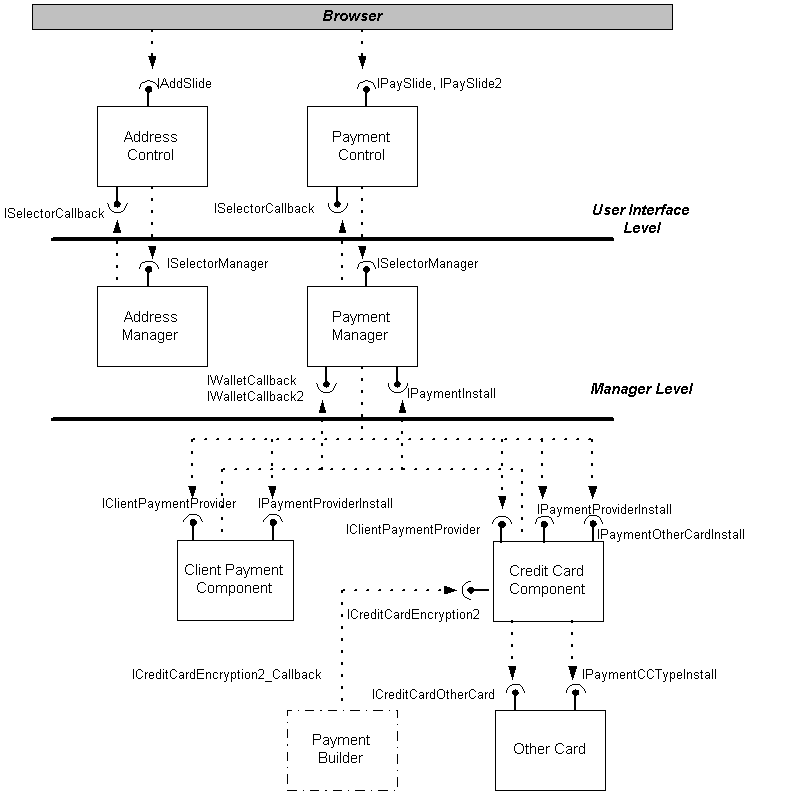



The sample client payment component (CPC) contains sample source files and accompanying documentation that you can use to build a client payment component that is supported by the Payment Selector control. The CPC object stores instances of your payment type. Instances are added, deleted, and modified using the user interface of the Payment Selector. The Payment Selector user interface also allows the user to choose your payment type from the Payment Selector to make online purchases.
The Payment Manager manages a new CPC using the member functions of the IClientPaymentProvider interface. Your payment option is displayed by the Payment Selector user interface when your CPC registers with the Payment Selector.
The following diagram illustrates how the CPC functions within the Microsoft® Wallet architecture.

A CPC object in the Payment Selector represents a payment method such as credit cards or electronic cash debit cards. Each CPC supports one or more types of that method. For example, a type of a credit card payment method is a VISA card. Each CPC may contain zero or more instances of any type supported by that CPC. Each instance possesses a friendly name that is unique across all CPCs in the Payment Selector.
The Payment Selector provides the consumer with a rich user interface for managing and selecting instances of payment types. Payment types (such as a VISA, bank, or department store card) are stored in the Payment Selector. When a user creates a new instance of an existing payment type (such as a second bank card), that instance is stored by the payment type component. These instances are locally managed according to a friendly name that is assigned by the user. Note that instances of payment types are never shared between different components in the Payment Selector.
After a consumer selects an instance of a payment type from the Payment Selector, a payment instruction (PI) is generated in that payment type component, routed through the Payment Selector, and sent over the browser to the server for the merchant to process payment. The PI may be encrypted and will pass through the Payment Selector as opaque data.
Refer to the "Client Payment Component (CPC) Interfaces" section for a detailed description of the CPC interfaces and function syntax.